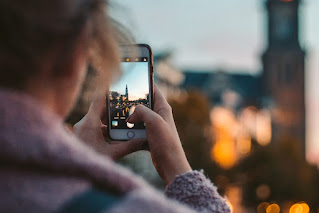tips for taking better photos with your smartphone
While the quality of your mobile phone's sensors is important, that doesn't necessarily mean everything depends on them when it comes to taking good photos with a current smartphone.
On the contrary, there are many recommendations that will easily take your results to the next level.
We have already explained why everyone should learn photography, a skill that is increasingly in demand, not only considering the possibility of someone hiring us for our talents but also because a large part of it depends. others. Fortunately, it has become easier to take good photos with smartphones. More so with these tips for taking better photos.
In fact, you, too, are probably passionate about photographing a lot of what you see. Although you may not be satisfied with the results, and even if you try, you feel like you are not progressing.
In this case, here we have a series of rules that do not need to be memorized completely or at once. You will have to combine it slowly, little by little, to feel more comfortable with the images obtained. Thanks to these tricks, you will see how to go from amateur photos to professional photos in just a few weeks.
10 tips for better photos with your smartphone
Simple scene selection
If it's a wide scene, where you want the subject in the picture to get all the attention, but it's hard for you to focus, maybe you should quit and choose a simpler scene. The capture may seem to lose its cool, but it will still say what you want it to say. It will look better.
Fill in the gaps in the frame
In addition, this approach often avoids other logical errors for beginners, which occur by leaving a lot of dead space towards one of the sides. This tends to confuse whoever sees the images.
Change aspect ratio
In the past, most images on smartphones were in the classic 4:3 format by default for devices. However, today we can play in more interesting formats, such as 1: 1 or 16: 9. Try and tell us!
Move away from the center of the frame
Another tip for taking better photos with your smartphone is to move away from the center of the frame. then? Basically, until you've mastered the rule of thirds, place your subject 1/3 or 2/3 of the frame.
Take advantage of the available evidence
If guides, such as constructions, buildings, railroads, or fences, are straight or curved, you can take advantage of them. The viewer's eye is usually directed to them, and your image will gain a great deal of depth.
Tips for taking better photos 1.5
Take advantage of Qatar Airways
The same is true for diagonal lines, as these images tend to be somewhat more complex. Unlike the previous ones, they do not provide security but rather uncertainty, so you must know how to play with them.
Leave some space when photographing moving objects
At the time we analyzed whether you need a tripod for landscape photography, and we said that's not always the case. However, if you want to capture moving objects, you will have to take into account some accidents.
For example, what is its orientation, how much space do you want to capture through it, which is in the center, etc. You will also need to use Pro mode to set the shutter speed.
Background Control
The background behind the subject or the most relevant object in your photo can give you the perfect shot...or spoil it. You have to check the shooting angle well, after that, it may be a good idea to use the portrait mode.
It is better to rotate 360 degrees around the subject or object in question, until the angle and background match with you.
Try to be creative with colors
In addition to mixing light and dark to contrast colors, you can mix colors of the same hue in your image. There are countless different color schemes to make your photos as beautiful as possible.
breaking the rules
The latest tips for taking better photos with your smartphone are intriguing, but important. We want to invite you to break the rules, leave the conventions and look for variations.
Conclusions
In short, we can say that there are several things that need to be understood in order to improve the standard of our images. The challenge really isn't in the knowledge, already pervasive, but in the patience to polish the technique.
With the files already in place, some photo editing apps on iOS and Android that you should try can help you.



